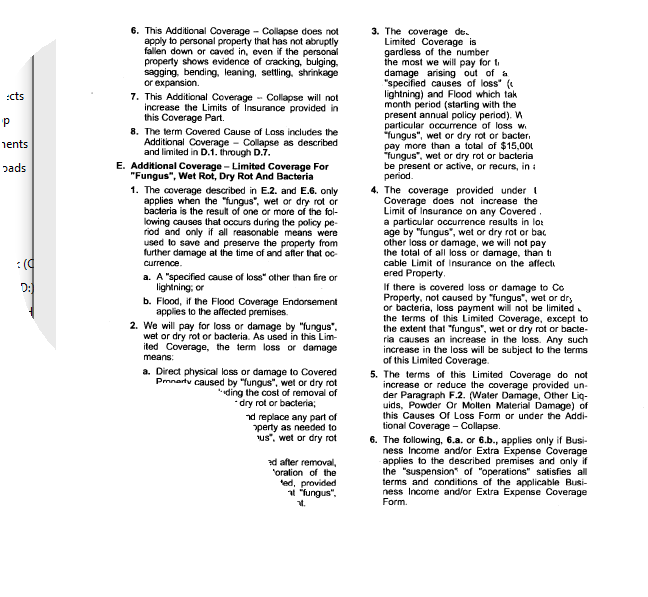
Insurance Coverage and the “EFFICIENT PROXIMATE CAUSE”
In Washington, a judicial doctrine called the “efficient proximate cause” rule may apply and affect insurance coverage when multiple events combine to cause a loss. The doctrine is considered “friendly” to insureds because it sometimes creates coverage for a loss caused in part by an excluded peril, where that excluded cause of loss was itself set in motion by a covered cause of loss.
Insurance policies provide coverage for a variety of losses, but they also exclude many causes of loss. In the context of homeowner’s insurance, for example, many policies specifically exclude coverage for flood damage, earthquake damage, or landslides. Often, coverage for these otherwise-excluded causes of loss is available for an additional premium. When a covered peril and an excluded peril both contribute to a loss, the efficient proximate cause rule dictates that the question of coverage will turn on which event (the excluded peril or the covered peril) was the efficient proximate cause of the loss – that is, “the cause that triggers other causes to result in a loss.” Findlay v. United Pac. Ins. Co., 129 Wn.2d 368, 380, 917 P.2d 116, 122 (1996).
The case of Safeco Ins. Co. of Am. v. Hirschmann, is a useful example of the doctrine at work. In that case, an insurance company asked the trial court to rule that certain damage to a home was not covered under its insurance policy. 112 Wn.2d 621, 773 P.2d 413 (1989). The policy at issue covered damage caused by heavy wind and rain but excluded damage caused by landslides. A coverage dispute arose when heavy wind and rain caused a landslide which then damaged the insureds’ home. The trial court found for the insurance company (that there was no coverage), but the appellate court reversed, and the Washington Supreme Court affirmed the appellate court, citing the efficient proximate cause rule. The Court explained that, when a chain of events causes a loss, “[i]f the initial event, the “efficient proximate cause,” is a covered peril, then there is coverage under the policy regardless whether subsequent events within the chain, which may be causes-in-fact of the loss, are excluded by the policy.” Safeco Ins. Co. of Am. v. Hirschmann, 112 Wn.2d 621, 628, 773 P.2d 413, 416 (1989)
Washington courts apply the efficient proximate cause rule in a broader range of cases than do courts in many other states. In contrast with some other states, Washington has traditionally not allowed insurers to avoid covering losses of this nature by drafting policy terms purporting to circumvent the rule, and “an exclusionary clause drafted to circumvent the rule will not defeat recovery.” Key Tronic Corp., Inc. v. Aetna (CIGNA) Fire Underwriters Ins. Co., 124 Wn.2d 618, 881 P.2d 201 (1994). Similarly, the Washington Supreme Court has also explicitly held that the rule is not limited to any one type of insurance policy. Although often applied in the context of property insurance, Washington courts have found the doctrine applies equally in the context of a commercial general liability policy. Xia v. ProBuilders Specialty Ins. Co., 188 Wn.2d 171, 183, 400 P.3d 1234, 1240 (2017), as modified (Aug. 16, 2017).
Given the broad construction of the efficient proximate cause rule in Washington and its potential to dramatically impact coverage, anyone involved in a coverage dispute with an insurer should obtain counsel to evaluate the merits of the case.
If you aren’t sure if you have a problem or a possible claim, please don’t hesitate to contact us!
